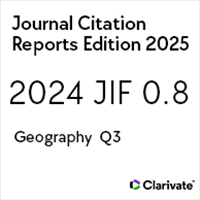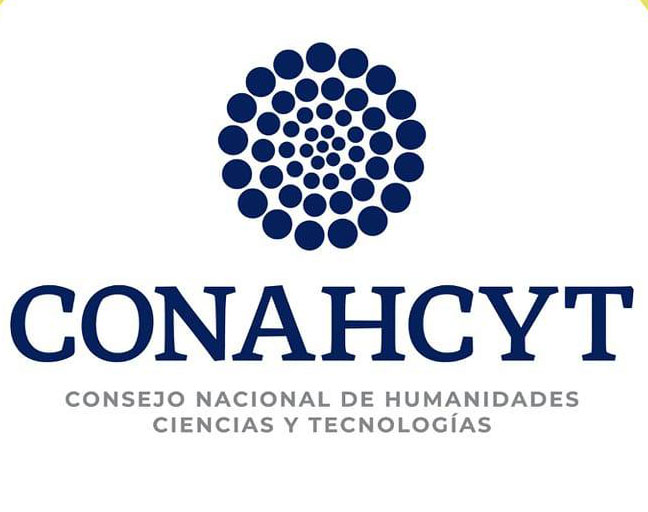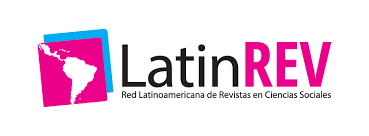Definición de la frontera entre Estados Unidos y México como hiperrealidad
Definig the US-Mexico border as hyperreality
https://doi.org/10.21670/ref.2001.04.a05
Palabras clave:
Periferia, sistema social transfronterizo, estación en circuitos transnacionalesResumen
La frontera México-Estados Unidos ha sido definida como periferia, como sistema social transfronterizo, y más recientemente como una estación en circuitos transnacionales. Las dos primeras definiciones presuponen los fuertemente criticados conceptos de región y área cultural. La tercera definición comparte con las anteriores la suposición epistemológica positivista de que la frontera es una entidad dada que puede ser conocida y experimentada tal cual es por cualquier observador, independientemente de su locación social. En este artículo se argumenta a favor de la definición de la frontera como una hiperrealidad constituida por discursos, prácticas y experiencias de diversos actores sociales. Desde esta postura, la imagen de la frontera como una división geopolítica formal es interpretada como una imagen sustentada y reproducida por agencias de gobierno. Se argumenta en cambio, a favor de la documentanción y promoción de las imágenes alternativas construidas y reproducidas por actores sociales desde diferentes locaciones de poder.Abstract The US-Mexico border has been defined as a periphery, as a transborder social system, and more currently, as a station in transnational circuits. The two first definitions presuppose the strongly criticized concepts of region and cultural area. The third definition shares, along with the other two definitions, the positivist epistemological supposition that the border is a specific entity that can be known and experienced as such by any observer, no matter their social site. This paper is to support the definition of the border as a hyperreality constituted by speeches, practices, and experiences of the different social actors. From this posture, the image of the border as a formal geopolitical division is interpreted as a sustained image and reproduced by government agencies. Likewise, this writing is to support the documentation and promotion of alternative images constructed and reproduced by social actors from different power sites.
Citas
Abu-Lughod, L. (1991). “Writing against culture”. Recapturing Anthropology: Working in the Apresent. R. Fox, ed. School of
American Research Press: Santa Fe, New Mexico. Pp. 137-162.
Alvarez, Robert R. (1984). “The border as social system: The California case”. New School 9 (1-2):119-134.
(1987). Familia: Migration and Adaptation in Baja and Alta California, 1800-1975. University of California Press: Berkeley.
(1990). “Mexican entrepreneurs and markets in the city of Los Angeles: The case of an ethnic enclave”. Urban Anthropology 19:99- 124.
(1994). “Changing ideology in a transnational market: Chiles and chileros in Mexico and the U.S.” Human Origins 53(3): 255-262. DOI: https://doi.org/10.17730/humo.53.3.x12640lq3051u064
(1995). “The Mexican-US border: The making of an anthropology of borderlands”. Annual Review of Anthropology 24: 447-470. DOI: https://doi.org/10.1146/annurev.an.24.100195.002311
(1998). “La maroma, or chile, credit and chance: An ethnographic case of global finance and middlemen entrepreneurs”. Human Organization 57(1):63-73. DOI: https://doi.org/10.17730/humo.57.1.8050100254002hv1
Anderson, B. ( 1991). Imagined Communities. Verso, New York.
Anzaldúa, G. (1987). Borderlands/La Frontera: The New Mestiza. Spinsters/Aunt Lute:. San Francisco.
Appadurai, A. (1991). “Global ethnoscapes: Notes and queries for a transnational anthropology”. Recapturing Anthropology: Working in the Present. R. Fox, ed. School of American Research Press: Santa Fe, New Mexico. Pp. 191-210.
Bade, B. (1994). “Yerbas, limpias y cirugía: el cuidado de la salud de los mixtecos en California”. Coloquium “La Ruta Mixteca”. August 2-3. Unpublished mimeo.
Bach L, N. Shiller Glick and Blanc C. Szanton (1994). Nations Unbound: Transnational Projects, Postcolonial Predicaments, and Deterritorialized Nation States. Gordon and Breach Publishers. Langhorne, Penn.
Baudrillard J. (1983). Simulations. Semiotext. New York.
Bolton, Herbert Eugene (1921). The Spanish Borderlands: A Chronicle of Old Florida and the Southwest. Yale University Press. New Haven.
Bustamante J.A. (1992). “Identidad y cultura nacional desde la perspectiva de la frontera norte”. Decadencia y Auge de las Identidades. M. Valenzuela ed. COLEF. Tijuana. Pp. 91-118.
(1996). “Etnicidad en la frontera México-Estados Unidos: una línea hecha de paradojas”. Reflexiones sobre la identidad de los pueblos. COLEF: Tijuana. Pp.36-55.
Caballero J. and M. Rioz Morales (1994). “Impacto de la migración trasnacional entre los nuu-savi y bene xhon de Oaxaca.
Colloquium “La Ruta Mixteca”. August 2-4”. Unpublished.
Chabram-Dernersesian, Angie (1997). “Out of the labyrinth, into the race: The other discourse of Chicano-Mexicano difference”. Frontera Norte , 9 (18): 127-144.
Chambers, Ian (1994). Migrancy, Culture, Identity. Routledge. New York.
Chávez, Leo R. (1998). Shadowed Lives: Undocumented Immigrants in American Society. Harcourt-Brace Jovanovich College Publishers: Ft. Worth.
Delgado, Guillermo (1997). “Tres instancias sobre el otro lado. Ensayos sobre una antropología de la fricción”. Frontera Norte, 9 (18):159-180.
Díaz Guerrero, Rogelio (1978). “Mexicans and Americans: Two worlds, one border...and one observer”. Views Across the Border. S. Ross ed. University of New Mexico Press: Albuquerque. Pp. 283-307.
Donnan, H. & T. Wilson (1994). “An anthropology of frontiers”. Border Approaches: Anthropological Perspectives on Frontiers. H. Donnan & T. Wilson eds. University Press of America: Landham, MD.
Eco, Umberto (1983). Travels in hyperreality. Harcourt-Brace Jovanovich.
San Diego.
(1987). Travels in hyperreality. Picador: London.
Escobar, Agustín, M. Gonzáles and B. Roberts (1986). “Migration, labourmarkets, and the international economy: Jalisco Mexico and the US”. Migrants, Workers, and the Social Order. J. Eades ed. 26:1-16. ASA Monographs, Tavistock Publications: London.
Fábregas Puig, Andrés (1992). El concepto de región en la literatura antropológica. Gobierno del Estado de Chiapas, Consejo Estatal de Fomento a la Investigación y Difusión de la Cultura, DIFChiapas. Tuxtla Gutiérrez, Chiapas.
Fernández, Raúl A. (1980). La Frontera México-Estados Unidos: Un Estudio Socioeconómico. Editorial Terra Nova: Mexico.
Fernández-Kelly, M.P. (1983). For We are Sold, I and my People: Women and Industry in Mexico’s Frontier. SUNY Press: Albany.
Fox, Richard (1991). “Introduction: Working in the present”. Recapturing Anthropology. R. Fox, ed. Santa Fe. School of American Research Press. Pp. 1-16.
Frank, Andre G. (1966; 1969). “The development of underdevelopment”. Latin America: Underdevelopment or Revolution? Monthly Review Press: New York. Pp. 3-17. DOI: https://doi.org/10.14452/MR-018-04-1966-08_3
Galarza, E. (1972). “Mexicans in the southwest: A culture in process”. Plural Society in the Southwest. E. H. Spicer and R. H. Thompson, eds. Interbook: New York. Pp. 261-297.
García Canclini, Nestor (1989). Culturas híbridas. Estrategias para entrar y salir de la modernidad. CNCA: Mexico.
Gupta, Akhil and J. Ferguson (1992). “Beyond `culture’: Space, identity, and the politics of difference”. Cultural Anthropology 7(1):6-23. DOI: https://doi.org/10.1525/can.1992.7.1.02a00020
(1997a). Anthropological Locations: Boundaries and Grounds of a Field Science. University of California Press: Berkeley and Los Angeles.
(1997b). Culture, Power, Place: Explorations in Critical Anthropology. Duke University Press: Durham and London.
Hackenberg, R.A. and B. H. Hackenberg (1999). “You can do something! Forming policy from applied projects, then and now”. Human Organization, 58 (1): 1-15. DOI: https://doi.org/10.17730/humo.58.1.n10437235xgj4143
Harvey, Penelope (1996). Anthropology, the Nation state and the Universal Exhibition. Routledge: London.
Herrera Sobek, María (1996). “Ensueño y dolor. Etnicidad en cuatro poetas chicanas”. Reflexiones sobre la identidad de los pueblos. COLEF: Tijuana, Baja California. Pp.65-83.
Heyman, Josiah (1993). “The oral history of the Mexican-American community of Douglas, Arizona 1901-1942”. Journal of the Southwest 35(2):186-206.
(1994). “The organizational logic of capitalist consumption on the Mexico-United States border”. Research Economic Anthropology 15: 175-238.
Iglesias Prieto, Norma (1997). Beautiful Flowers of the Maquiladora. University of Texas Press, Institute of Latin American Studies: Austin. DOI: https://doi.org/10.7560/738683
Jameson, Frederic (1984). “Postmodernism, or the cultural logic of late capitalism”. New Left Review 146:53-92.
Johnson, David E. and Scott Michaelsen (1997). “Border secrets: An introduction”. Border Theory: The limits of Cultural Politics. University of Minnnesota Press: Minneapolis. Pp. 1-39.
Kearney, Michael (1991). “Borders and boundaries of the state and self at the end of the empire. J.” Historical Sociology 4(1): 52-74. DOI: https://doi.org/10.1111/j.1467-6443.1991.tb00116.x
(1995). “The local and the global: The anthropology of globalization and transnationalism”. Annual Review of
Anthropology 24:547-565.
(1996). Reconceptualizing the Peasantry. Anthropology in Global Perspective. Westview: Boulder.
(1998). “Transnationalism in California and Mexico at the end of the empire”. Border Identities. Nation and State at International Frontiers. T.M. Wilson and H. Donnan, eds. Cambridge University Press: Cambridge. Pp. 117-141.
Kutshe, Paul (1983). “Theories of borders and frontiers”. Borderlands Sourcebook. E.R. Stoddard et al. eds. University of Oklahoma Press: Norman. Pp. 16-19.
León-Portilla, M. (1972). “The Norteño variety of Mexican culture: An ethnohistorical approach”. Plural Society in the Southwest. E.H. Spicer and R.H. Thompson, eds. University of New Mexico Press: Albuquerque.
(1990). “California: su destino de frontera”. Fronteras en Iberoamerica. Tomo II:208-219. Memorias del Primer Congreso Internacional de Fronteras en Iberoamérica. UABC: Baja California.
Lugo, Alejandro (1997). “Reflections on border theory, culture, and the nation”. Border Theory: The Limits of Cultural Politics. Scott Michaelson and D. E. Johnson, eds. University of Minnesota Press:.Minneapolis. Pp. 43-67.
Lutz, Catherine (1995). “The gender of theory”. Women Writing Culture. Ruth Behar and D. Gordon, eds. University of California Press: Berkeley. Pp. 249-266.
Malagamba Ansótegui, Amelia (1997). “A note on Chicano-Mexicano cultural capital: African-American icons and symbols in Chicano art”. Frontera Norte 9(18):63-84.
Martínez, Oscar J. (1988). Troublesome Border. University of Arizona Press: Tucson.
(1994). Border People. Life and Society in the US-Mexico Borderlands. University of Arizona Press: Tucson.
McDonald, James H. (1994). “NAFTA and basic food production: Dependency and marginalization on both sides of the US-Mexico border”. Research in Economic Anthropology 15:129-143.
Mines, R. and Ricardo Anzaldúa (1982). New Migrants vs. Old Migrants: Alternative Labor Market Structure in the California Citrus Industry. Program in US-Mexico studies, University of California, San Diego: La Jolla.
Monsiváis, C. (1978). “The culture of the frontier: the Mexican side”. Views Across the Border. S. Ross, ed. University of New Mexico Press: Albuquerque. Pp. 50-67.
Nagengast, Carole, R. Stavenhagen, and M. Kearney (1992). Human Rights and Indigenous Workers: The Mixtecs in Mexico and the U.S. Center for U.S.-Mexican Studies. University of California: San Diego.
Nostrand, R.L. (1983). “A changing culture region”. Borderlands Sourcebook. Stoddard et al. eds. University of Oklahoma Press: Norman. Pp. 6-15.
Ojeda de la Peña, Norma (1994). “Familias transfronterizas en Tijuana: migración y trabajo internacional Familias transfronterizas en Tijuana: dos estudios complementarios”. Cuadernos #6. El Colegio de la Frontera Norte: Tijuana, Baja California. Pp. 9-50.
Paredes, A. (1978). “The problem of identity in a changing culture: Popular expressions of culture conflict along the Rio Grande border”. Views Across the Border. S. Ross, ed. University of New Mexico Press: Albuquerque. Pp. 68-94.
Peña, Devon G. (1997). The Terror of the Machine. Technology, Work, Gender, & Ecology on the US-Mexico Border. CMAS Books, University of Texas at Austin: Austin.
Pérez Ruiz, Maya Lorena (1993). “La identidad entre fronteras”. Nuevas Identidades Culturales en México. G. Bonfil Batalla, ed. CNCA: Mexico. Pp. 126-153.
Perry, Nick (1998). Hyperreality and Global Culture. Routledge: London.
Reisler, Mark (1996). “Always the laborer, never the citizen: Anglo perceptions of the mexican immigrant during the 1920´s”.
Between Two Worlds. David G. Gutiérrez, ed. Scholarly Resources Inc.: WilmingtonDelaware. Pp. 15: 23-44.
Rosaldo, Renato (1991). Cultura y verdad. Nueva propuesta de análisis social. CNCA: Mexico.
Rouse, R. (1991). “Mexican migration and the social space of postmodernism”. Diaspora 1(1): 9-23. DOI: https://doi.org/10.1353/dsp.1991.0011
Sassen, Saskia (1988). The Mobility of Labor and Capital: A Study in International Investment and Labor Flow. Cambridge University Press: Cambridge. DOI: https://doi.org/10.1017/CBO9780511598296
(1996). “US immigration policy toward Mexico in a global economy”. Between Two Worlds. David G. Gutiérrez, ed. Scholarly
Resources Inc.: Wilmington, Delaware. Pp. 15: 213-228.
(1998). Globalization and its discontents. The New Press: New York: Spradley, James P. (1972). “Adaptive strategies of urban nomads: The ethnoscience of tramp culture”. Anthropology of Urban Environments. Thomas Weaver and D. White eds. Monograph series No. 11, 21-38. Society for Applied Anthropology: Boulder.
Stoddard, Ellwyn R. (1991). “Frontiers, borders and border segmentation: Toward a conceptual clarification”, J. of Border DOI: https://doi.org/10.1080/08865655.1991.9695402
Studies VI(1):1-22.
(1983). “Overview”. Borderlands Sourcebook. E. Stoddard et al., eds.: University of Oklahoma Press. Pp. 1-5.
Tabuenca Córdoba, María Socorro (1997). “Aproximaciones críticas sobre las literaturas de las fronteras”. Frontera Norte, 9 (18): 85-110.
Taylor Hansen, L. D. (1997). “Las fiestas patrias y la preservación de la identidad cultural mexicana en California: una visión histórica”. Frontera Norte 9 (18):29-44.
Valenzuela Arce, José Manuel (1997). A la brava ése: identidades juveniles en México: cholos, punks y chavos banda. EL COLEF. Tijuana, Baja California.
Varese, Stefano (1994). “Entre el tianguis y los designios neo-imperales: etnopolítica de la migración transnacional indígena”. Colloquium “La Ruta Mixteca”. August 2-3.
Vélez-Ibañez, Carlos G. (1996). Border Visions: Mexican Cultures of the Southwest United States. University of Arizona Press: Tucson. DOI: https://doi.org/10.2307/j.ctv1qwwj58
Wallerstein, Emmanuel (1976). The Modern World System. Academic Press: New York.
Weaver, T. (1988). “The human rights of undocumented workers in the United States-Mexico border region”. Human Rights and Anthropology. T.E. Downing and G. Kushner, eds. Cultural Survival: Cambridge. Pp. 73-89.
Whiteford, Linda (1979). “The borderlands as an extended community”. Migration Across Frontiers. F. Camara and R. Van Kemper, eds. State University of New York: Albany. Pp. 127-137.
Zabin, Carol (1992). “Mixtec migrant farmworkers in California agriculture: A dialogue among Mixtec leaders, researchers and farm labor advocates”. Current issues brief. Center for US-Mexican Studies, University of California: San Diego.































